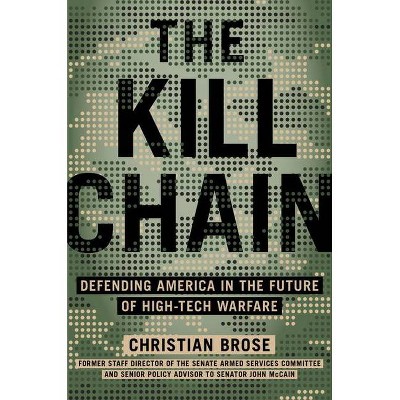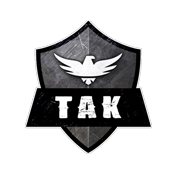CTI’s, Steven Turner, discusses key takeaways from The Kill Chain by Christian Brose
5/3/2021

After the last Zoom meeting on a Friday, an Audible alert popped up mentioning The Kill Chain by Christian Brose as something I might enjoy reading. With some chores on the horizon, a new book sounded like a good distraction. I clicked buy and instantly started streaming to Bluetooth while simultaneously downloading for offline playback on my phone. As I moved in and out of WiFi reception to LTE, playback never skipped a beat. The author’s words through Friday and Saturday morning resonated with my experience as an engineer. A good portion of the book is about challenges in US Defense policy, acquisition, and bureaucracy, which certainly need to be addressed but many of the issues covered are technical in nature, which means they can be solved with the application of creative minds and engineering effort. First, The US Defense Industrial Base (DIB) has to adapt or be left behind. The author explicitly states, “Don’t be Blockbuster.” History is littered with companies that failed to recognize changes in markets and as a result, they fail. This doesn’t mean expending precious resources on wasteful research and development projects constantly preparing for some future conflict. It means, rapidly experimenting through small investments and running tests against the market to ascertain if new approaches make sense. And when they don’t, stop investing. This means stop investing in capital-intensive projects over many years that sit on shelves and go unused. It means really listening to and engaging the users of software and systems and building solutions that meet their expectations driven by the quality of commercial solutions they use in their everyday lives.
As a nation and CTI supporting the men and women in our armed services and first responders, we have a responsibility to innovate and embrace change. The nature of any organization is to resist change. And as highlighted in the book, particularly the military, where change can cost lives. However, innovation often only occurs when the potential of defeat is significant, loss of expensive assets occurs, or there are immediate threats to our safety. We have to be open and motivated to change before competitors blatantly demonstrate our failure to do so. Christian highlights this mentality of risk-taking, with examples from Bernard Schriever and William Moffett, two individuals that drove America’s pivots into Space and Naval Aviation respectively, thereby forever changing not only the strategies and tactics of national defense but also resulting in massive changes domestically through investment in new technologies. A key tenet of both innovators was to experiment–blow up hundreds of rockets or try landing a plane on a battleship to test and refine the idea. Policies and pushes for Modular Open Sensor Architectures (MOSA) and “DevSecOps” help drive experimentation and rapid iteration by providing the environments and the culture necessary to facilitate a fail-fast deployment of new software and systems without cumbersome manual processes or bluntly, people, getting in the way.
CTI has performed numerous systems integrations over the years into various Government-owned platforms. This process is often cumbersome because each vendor has vertically integrated their products. While this is an effective business strategy, it encumbers a necessary pivot away from the “One Man One Box” mentality to a “Military Internet of Things.” Government and industry must be supportive of open integration. What does this mean in terms of discrete technological change? No more Interface Control Documents (ICD) in PowerPoint or Word! ICD’s must be machine-readable and evolvable. Ideally, you have an interface an engineer can experiment against! Provide multi-platform Software Developer Kits (SDK). No more proprietary Application Programming Interfaces (API’s) that are not available on Government collaboration platforms or even better put more out on the public internet where teams can easily find them and experiment with integrating. So often integration is hampered by overly sensitive handling of interfaces that are inherently benign on their own. The most advanced sensors and multi-billion dollar platforms are nothing if they can’t talk to each other, our disparate services, and our allies. I’m sure many civilian readers are familiar with this frustration in your day-to-day life, “Why won’t my niece’s Nintendo Switch connect to my Wifi?” or “Why doesn’t my security system work with Alexa?” As the author states, “EACH sensor or shooter we add to our networks… results in correspondingly exponentially more required money and manpower.” We will run out of one or both eventually. We need to lower that barrier to entry to “glue” things together. Make the complex as simple, easy, and open as possible.
Now, couple any one of these challenges above with your internet connection going down every day for several hours with no predictability. Also, your internet connection is often only slightly better than the dial-up modem you may have had in the late 1990’s. While there are many companies pressing the envelope on what’s possible with enterprise and tactical mesh networks — This is what many of the men and women in our armed forces encounter every day but with the added pressures of combat, flight, or navigation. There is an incredible amount of wasted effort to build and maintain networks. The “One Man One Box” kill chain is dated and has not kept up with modern technology. And with these old approaches, trying to integrate and build the Internet Military of Things that actually services our professional military men and women is like piecing together a jigsaw puzzle where half of the puzzle was built by one toy company and the other half you made yourself! We have this collection of disjointed “balkanized battle networks, platforms, sensors, and systems” that the aforementioned open integration mentality can solve.
Finally, there are way too many humans in the loop in DoD systems. Does Amazon have an army of employees scouring my reading preferences to recommend this book? No! An algorithm recommended it to me and I took action. The same goes for firing up navigation on your mobile device and the software making recommendations for avoiding traffic. As highlighted by the author we have to move towards Humand Command, Machine Control. There is so much wasted talent and energy combing through the terabytes of data coming off of amazing systems in the DoD. Emerging real Machine Learning approaches that adhere to MOSA can enable humans to focus on making strategic, moral, and operational decisions. Why is anyone sitting in an operations center staring at video feeds? We, the technology companies of the US, can fix this! Through small, repeated innovations CTI is working to address this. For example, building intuitive displays for wearables integrated with TAK that only display the most relevant information to prevent distraction. Or R&D projects focused on distributed Electronic Warfare leveraging algorithms like Paxos to enable distributed systems to make decisions autonomously with human approval. As the number of low-cost and attributable sensors and systems increases, the volume of data is only going to get worse. As technologists, we have a responsibility to fuse and apply emerging ML techniques on these feeds to focus on what matters to our end-users. Otherwise, we’re simply contributing to the noise and thus actually increasing the risk of dangerous situations occurring.
“A company could build amazing technology and the Pentagon would say there’s no requirement.” How many of us knew we needed an iPhone or Android? I would wager very few. The same applies to CTI and the broader DIB — which means to identify these transforming technologies we must experiment and iterate rapidly to validate or refute ideas. We will fail at times, but the future does not vote. We have to give it the opportunity through risk tolerance. CTI is ready to take risks through focused R&D, our RapidX and RapidLab events, and open, Government-owned software solutions that can be shared with our allies and partners. In doing so, I hope we can meet Christian Brose’s ideal of successful deterrence leading to a more peaceful world. Military technology should be as simple and easy as Audible recommending, purchasing, and Airplane-mode playback of The Kill Chain. We can fix this together.





